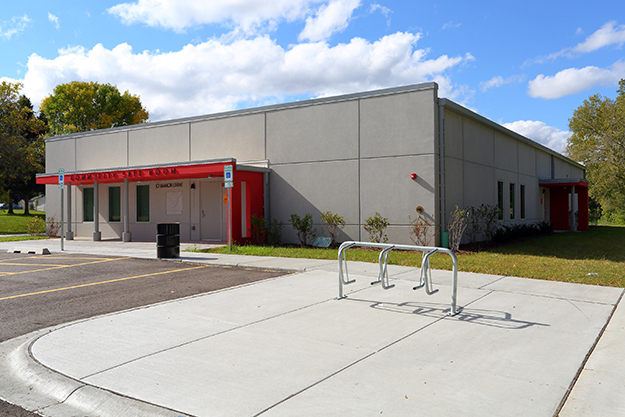Precast Concrete Storm Shelter Benefits
Precast concrete not only protects occupants within a structure, it adds value as well. There are a variety of added benefits precast offers to structures including:
- Improved structural integrity
- Protection against extreme winds
- Reduced construction times
- Thermal mass benefits
Buildings constructed with precast often serve as multi-purpose structures and are designed to serve as gyms or auditoriums as well. These added design considerations add comfort and convenience when people are forced to use the shelter for an extreme weather event. Thick, insulated precast walls dampen sound and FEMA-rated windows provide natural light improving the environment for occupants.
 Storm Shelter Case Study
Storm Shelter Case Study
Highland Manor’s $1.2 million Community Safe room provides safety during storms while also serving as a gathering place for residents. The facility is 6,400 square feet and has an occupancy of 845 during storms.
“Precast concrete was cost-effective and allowed critical components to be fabricated off-site and shipped to the site for assembly. This allowed construction to proceed during a relatively harsh winter without delays,” recalls David Boldt, project engineer at raSmith